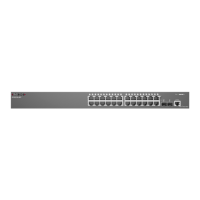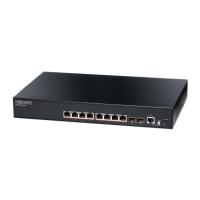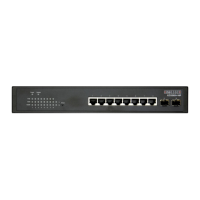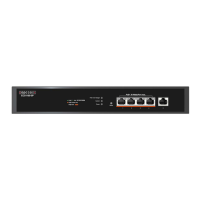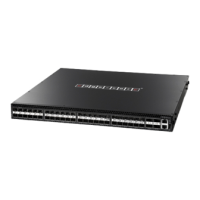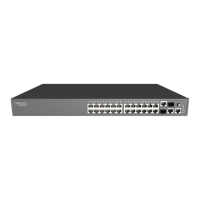Chapter 5
| SNMP Commands
SNMPv3 Commands
– 171 –
Command Mode
Global Configuration
Command Usage
◆
A group sets the access policy for the assigned users.
◆
When authentication is selected, the MD5 or SHA algorithm is used as specified
in the snmp-server user command.
◆
When privacy is selected, the DES 56-bit algorithm is used for data encryption.
◆
For additional information on the notification messages supported by this
switch, see table for “Supported Notification Messages” in the Web
Management Guide. Also, note that the authentication, link-up and link-down
messages are legacy traps and must therefore be enabled in conjunction with
the snmp-server enable traps command.
Example
Console(config)#snmp-server group r&d v3 auth write daily
Console(config)#
snmp-server user
This command adds a user to an SNMP group, restricting the user to a specific
SNMP Read, Write, or Notify View. Use the
no
form to remove a user from an SNMP
group.
Syntax
snmp-server user
username groupname
{
v1
|
v2c
|
v3
[
encrypted
] [
auth
{
md5
|
sha
} auth-password [
priv
{
3des
|
aes128
|
aes192
|
aes256
|
des56
} priv-password]]
snmp-server user
username groupname
remote
ip-address
{
v3
[
encrypted
] [
auth
{
md5
|
sha
} auth-password [
priv
{
3des
|
aes128
|
aes192
|
aes256
|
des56
} priv-password]]
no snmp-server user
username {
v1
|
v2c
|
v3
|
remote
ip-address
v3
}
username - Name of user connecting to the SNMP agent.
(Range: 1-32 characters)
groupname - Name of an SNMP group to which the user is assigned.
(Range: 1-32 characters)
remote
- Specifies an SNMP engine on a remote device.
ip-address - IPv4 address of the remote device.
v1
|
v2c
|
v3
- Use SNMP version 1, 2c or 3.
encrypted
- Accepts the password as encrypted input.
1. No view is defined.
2. Maps to the defaultview.

